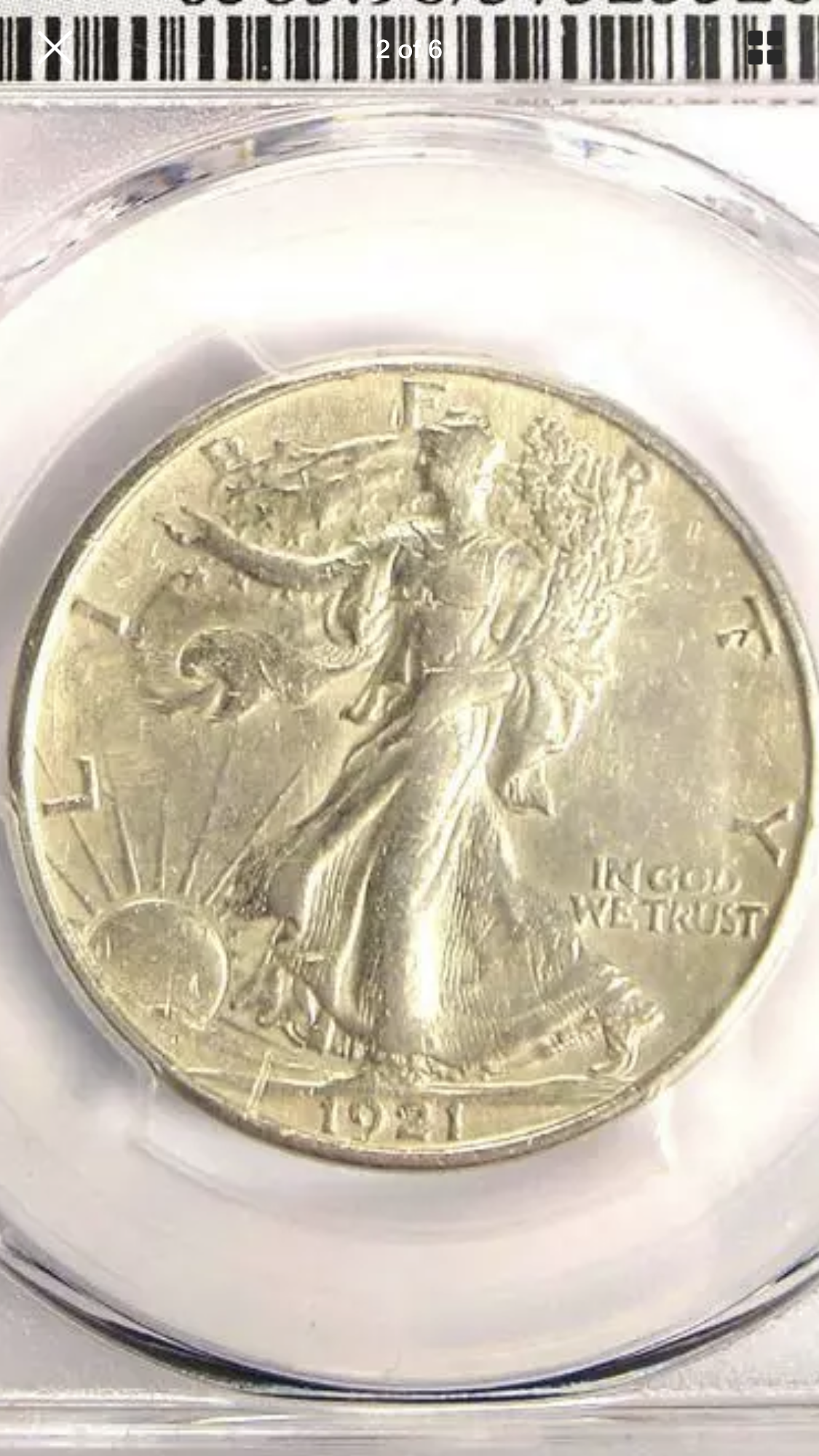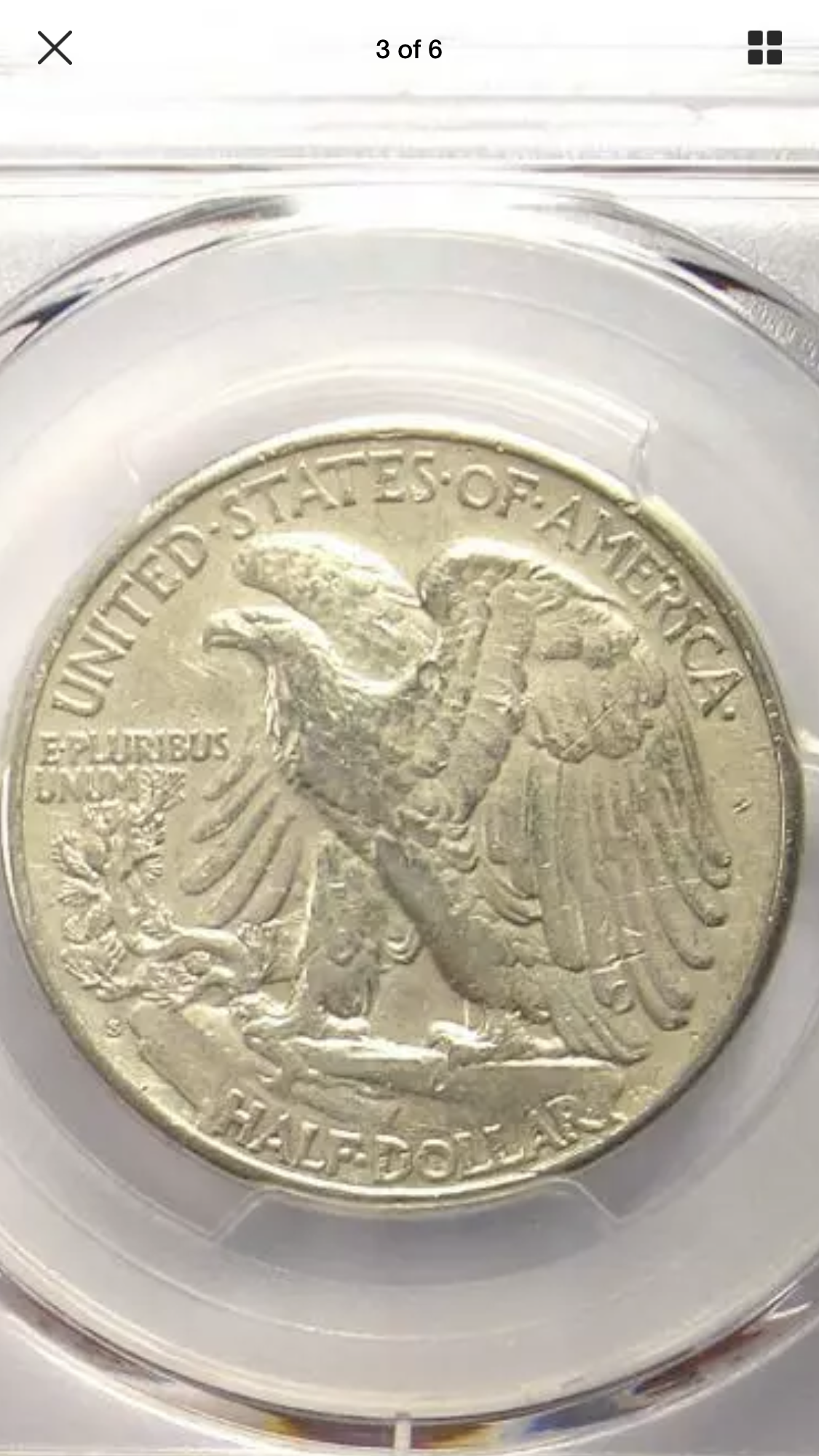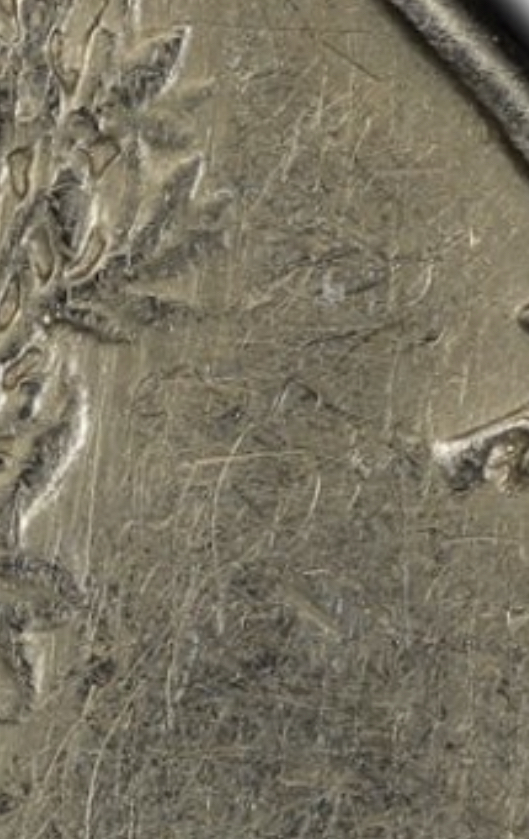This 21-S Walker is slabbed by our host as "repaired" Can anyone tell where it was repaired?
 KollectorKing
Posts: 4,820 ✭✭✭✭✭
KollectorKing
Posts: 4,820 ✭✭✭✭✭
![]()


0
 KollectorKing
Posts: 4,820 ✭✭✭✭✭
KollectorKing
Posts: 4,820 ✭✭✭✭✭
![]()


Comments
The wing on the reverse
You need to show the slab label, really and truly, This could be a set-up deal without seeing the label.
I care more about clearer images.
Mark Feld* of Heritage Auctions*Unless otherwise noted, my posts here represent my personal opinions.
TV photos
All kinds of damage that may have been smoothed, but tough to say for sure from the image. On the other hand, look at the separation of the feathers from the left side of the body. If that’s what it looks like in hand, I might question the authenticity of the coin.
Doggedly collecting coins of the Central American Republic.
Visit the Society of US Pattern Collectors at USPatterns.com.
The “T” in LIBERTY but the repair fell out... and... that’s enough for me.
My wild guess.
Just looked at pics using Cert verification. Looks fake to me. As for the repair, there’s some graffiti in the right obverse field that someone may have tried to mask with lots of marks.
Doggedly collecting coins of the Central American Republic.
Visit the Society of US Pattern Collectors at USPatterns.com.
BTW what's a "set-up deal"
Guess I'll have to look that up too.
And there’s more graffiti on the left obverse. I wonder if it referred to issues of authenticity?
Doggedly collecting coins of the Central American Republic.
Visit the Society of US Pattern Collectors at USPatterns.com.
The one on the bottom is authentic.
The one in the top looks like a bad transfer dies counterfeit, intentionally banged up to hide it’s true nature.
Doggedly collecting coins of the Central American Republic.
Visit the Society of US Pattern Collectors at USPatterns.com.
And try these close-ups for the graffiti.

Doggedly collecting coins of the Central American Republic.
Visit the Society of US Pattern Collectors at USPatterns.com.
So many issues I can understand those who question authenticity... at the least, certainly extensively worked on. Cheers, RickO
What is that pearl in the skirt?
Coin is a mess.
All comments reflect the opinion of the author, even when irrefutably accurate.
This is numismatic Where’s Waldo, very interesting post.
Where are @Insider2 and @CaptHenway ???
Doggedly collecting coins of the Central American Republic.
Visit the Society of US Pattern Collectors at USPatterns.com.
[?]
Insider was at Sebring in FL.
First thing. I am constantly fighting with folks who want to mess up a slab label with too much info. For me, "Repaired" says it all. Remember, I am not a member of all the "spoon-fed" generations. If a collector is too blind or lazy to find it, they should collect rocks, er, mineral specimens. It is good training to find the problem. If they call, I'll help them from my notes in the computer.
It is good training to find the problem. If they call, I'll help them from my notes in the computer.
I vomit when a label reads: "Scratches under wing reverse." All of us could have seen a coin that beat up using the better images that came later.
As to the coin, if both of these images are of a 1921-S coin, it does not look genuine as the design is different.
@MrEureka posted:
Perhaps this is a counterfeit PCGS slab.
They’re both 21-S’s and the slab is real. Both images were taken from CoinFacts.
Doggedly collecting coins of the Central American Republic.
Visit the Society of US Pattern Collectors at USPatterns.com.
The S in Pluribus is further from the eagle wings in the repaired one. So is the spaces between the wing feathers. Looks suspicious.
Not the first “genuine details” fake I’ve seen. The other was also a 21-s. Most have separation between the feathers and breast. The other I saw in hand and it had sand cast into the edge.
It’s only further away because of a loss of design detail in the creation of the counterfeit dies. Same goes for most other places where differences appear, although a few lost details appear to have been poorly reconstructed by hand on the counterfeit die.
Doggedly collecting coins of the Central American Republic.
Visit the Society of US Pattern Collectors at USPatterns.com.
BTW, real coins sometimes exhibit some of these same effects when dies are severely repolished. But I’ve never see a real 21-S half that was anything like that.
Doggedly collecting coins of the Central American Republic.
Visit the Society of US Pattern Collectors at USPatterns.com.
Makes sense to me.
Is it a counterfeit slab?
According to MrEureka, no. He previously posted “They’re both 21-S’s and the slab is real. Both images were taken from CoinFacts.”
Mark Feld* of Heritage Auctions*Unless otherwise noted, my posts here represent my personal opinions.
In that case, the slabbed one is also probably cast, not struck from false dies. If anyone can see that clearly from these images, I’d like to know how. Not that I doubt it’s possible.
Doggedly collecting coins of the Central American Republic.
Visit the Society of US Pattern Collectors at USPatterns.com.
I cannot tell anything for sure from those images.
The missing detail on the reverse feathers, including the spacing of the S, could be due to a heavy polishing down of the die. I am not familiar with such a die state, but that proves nothing.
I see nothing I would call a repair, though the damage in the fields may have been done to hide something. Considering the other problems on the coin, if I were still authenticating and had this coin in hand to the point that I felt confident enough to certify it, I would probably call it "Damaged" rather than "Repaired."
That said, I offer no opinion as to the authenticity and/or description of the coin because of the quality of the photographs.
TD
Tom: I agree that the reverse was re-worked. Other than the coin not being genuine that is the only reason for the reduction in detail.
Don't know what to think other than that.
21's were way better struck other then that one.
Pete
Looks Ex jewelry maybe rim repair
https://www.pcgs.com/setregistry/quarters/washington-quarters-major-sets/washington-quarters-date-set-circulation-strikes-1932-present/publishedset/209923
https://www.pcgs.com/setregistry/quarters/washington-quarters-major-sets/washington-quarters-date-set-circulation-strikes-1932-present/album/209923
Good find. Look at the separation of the feathers on the fake.
Positive BST Transactions (buyers and sellers): wondercoin, blu62vette, BAJJERFAN, privatecoin, blu62vette, AlanLastufka, privatecoin
#1 1951 Bowman Los Angeles Rams Team Set
#2 1980 Topps Los Angeles Rams Team Set
#8 (and climbing) 1972 Topps Los Angeles Rams Team Set
Easy solution: Send it BACK TO PCGS for a review along with a copy of this discussion. Call customer service first and send it to a specific person's attention so the piece will get special treatment rather than lost in the volume of submissions.